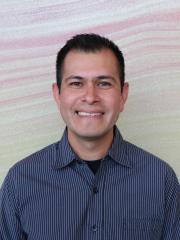Dr Miguel Alvarado Molina

Miguel specialises in monitoring and modelling of atmospheric pollution
During my PhD, I investigated the use of low cost and lightweight sensors that could be transported by Unmanned Aerial Vehicles (UAV) to collect reliable data on atmospheric pollution. The device and models developed proved successful as a relative method to monitor and calculate dust emission rates and concentrations. I continue my investigation in the use of low-cost sensors and UAVs for particles and gases, to monitor atmospheric emissions from extractive industries and transport (shipping and roads).
Recently I concluded a 30-day sprint as part of an “Innovation Arena” program promoted by the Department of Environment and Science (DES). The project consisted of developing a method to collect samples for odour analysis with UAVs. This first stage is proof of concept that could progress and become a tool for research and compliance of health and environmental guidelines.
Biography
I am an environmental scientist specialising in atmospheric pollution and the use of unmanned aerial vehicles (UAVs/drones) for air quality monitoring. I recently concluded my PhD in the development of a method to monitor PM10 dust particles using multi-rotor and fixed-wing UAVs. In addition to this most recent achievement, I also finished a Master’s in Environmental Management (2009) and accumulated several years of experience as an Environmental Engineer.
I currently work for the Queensland DES, in the Emission and Air Modeling team (EAM). In this period, I have developed, applied and tested air emission models for wind erosion at open areas, models for transport (rail, boats, on-road vehicles – COPERT AUSTRALIA). We have developed a land-use tool to aid decisions regarding air quality buffer zones for ports in Queensland. I created algorithms to calculate emission rates and to post-process modelling data (AERMOD).
Supervisor
Associate Professor Peter Erskine
